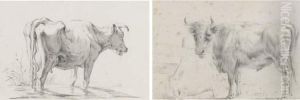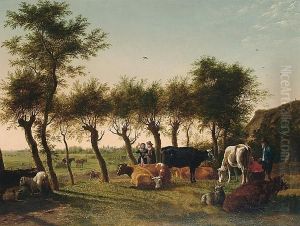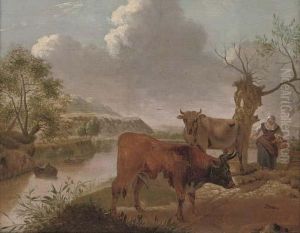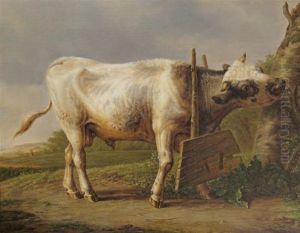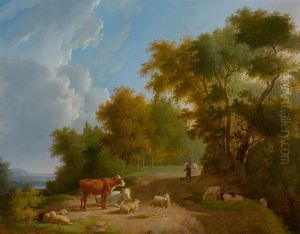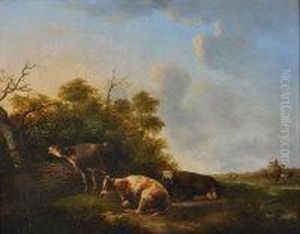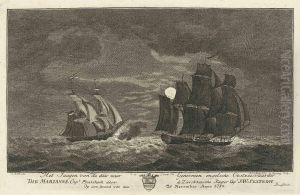Jan I Kobell Paintings
Jan I Kobell was a Dutch artist primarily known for his pastoral landscapes and animal paintings, particularly of cattle. Born on September 17, 1778, in Delfshaven, near Rotterdam, the Netherlands, he was part of a family of artists that included his brother, Hendrik Kobell, who was also a painter. Their family background provided a conducive environment for cultivating an interest in the arts from a young age.
Jan I Kobell was trained by his father, Jan Kobell, who was an animal and landscape painter as well. Under his father's tutelage, he developed a deep understanding and appreciation of the Dutch countryside, which would become a recurring theme in his works. His style was influenced by the 17th-century Dutch masters, and he became adept at capturing the tranquil and bucolic scenes of the Dutch landscape, often incorporating animals into his compositions.
Throughout his career, Kobell earned a reputation for his finely detailed and realistic renderings of farm animals, especially cattle. These works were characterized by their serene atmosphere and the artist's skillful use of light and shadow, which gave them a sense of depth and volume. Kobell's landscapes and animal paintings were well-received, and he gained a modest following among art collectors and enthusiasts of the time.
Despite his talent and the quality of his work, Jan I Kobell's life and career were relatively short-lived. He passed away on January 1, 1814, in The Hague, at the age of 35. His untimely death meant that his oeuvre was not as extensive as those of some of his contemporaries, but his contributions to Dutch art, particularly in the realm of landscape and animal painting, have been recognized by art historians. Today, his works can be found in various museums and collections, where they continue to be appreciated for their peaceful simplicity and technical precision.
